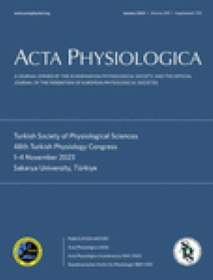Spatiotemporal Differences of GABAergic Polarization and Shunting During Dendritic Integration
Abstract
Aim
In the adult brain, GABA exerts either depolarizing or hyperpolarizing effects on neuronal membranes, depending on neuron type, subcellular location, and neuronal activity. Depolarizing GABA typically inhibits neurons through shunting, which is mediated by increased membrane conductance upon GABAA receptor activation; however, it can also excite neurons by recruiting voltage-dependent conductances. The net influence of these opposing actions of depolarizing GABA on glutamatergic synaptic inputs remains incompletely understood. We aimed to examine the spatiotemporal characteristics of membrane polarization and shunting mediated by GABAA receptors and assess their functional impact on the integration of GABAergic and glutamatergic inputs along dendrites.
Methods
Using whole-cell current-clamp recordings in CA1 pyramidal neurons and dentate gyrus granule cells (GCs) from rat hippocampal slices, we mimicked GABAergic and glutamatergic inputs with local GABA puff and glutamate spot-uncaging, respectively. A mathematical model further quantified the relative effects of local shunting and polarization.
Results
Depolarizing GABAergic postsynaptic responses (GPSRs) exhibited biphasic actions, exerting inhibitory effects at the synapse through shunting, and excitatory effects distally, where depolarization predominated. The excitatory component also persisted longer than the shunting inhibition. In contrast, hyperpolarizing GPSRs remained consistently inhibitory across both spatial and temporal dimensions.
Conclusions
These findings highlight the complex spatiotemporal interplay between shunting and membrane polarization mediated by GABAergic inputs, providing new insights into dendritic computation and neuronal network dynamics.


 求助内容:
求助内容: 应助结果提醒方式:
应助结果提醒方式:


